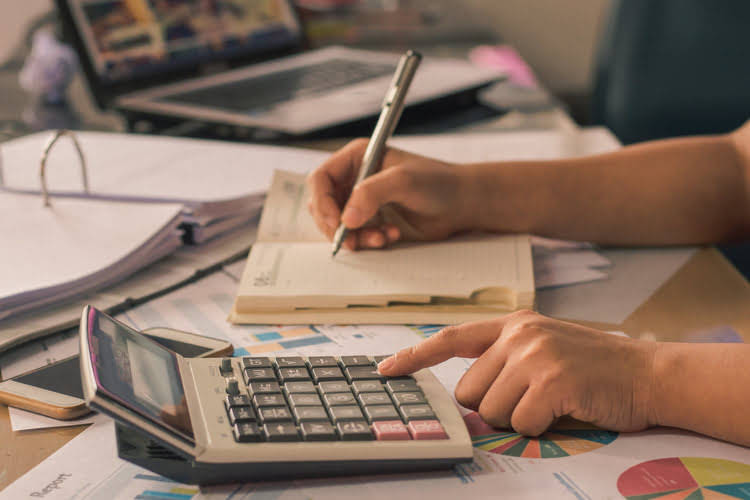
He has worked for over 25 years managing accounts for complex multI-national corporations, and five years ago founded Ledger Financials, a bookkeeping service with offices in Los Angeles and Mumbai. Make sure your team spends allocated time regularly with your bookkeeper the time spent on https://www.bookstime.com/articles/how-to-record-a-credit-sale each project. Contingency means that clients only pay us if they hire someone and is perfect for intermediate to senior level positions. For those extremely difficult, or board level hires, we recommend a retained search. The way they answer these questions will be a true tell in their fit for your company.
Bookkeeping for Interior Designers: What A Top Accountant Wants You to Know

Understand your financial situation, make informed business decisions, and follow tax regulations. You bill your clients for the amount of time you spend on their projects, so you need meticulous records about how many hours you’re really logging for a client. It can be easy to simply skip tallying your time or even to lose track of time when you’re in deep on a project.

Analyzing the Intricacies of Your Firm
- With our step-by-step instructions and expert tips, you will learn how to create a system.
- This will ensure that your records are accurate and understandable.
- Regular bookkeeping allows small businesses to budget appropriately and avoids financial instability.
- Determine the most suitable business structure for your interior design business.
- Anup recalls one client who mis-allocated items to the extent that her tax liability was $72,000.
- Regularly examining financial documents, such as profit and loss statements and balance sheets, is crucial for an interior design business.
Everything you are ordering at one time can go on one proposal. Recording every purchase or sale made, keeping a note of upcoming expenses for annual or monthly regulars such as renewal of software license, utility bill, etc., should be part of the accounting process. With the complex steps involved in each phase of interior design, it makes sense if your bookkeeper is one with an eye for details. This not only lets your firm keep abreast of its expenditures and profit margins, but also lets you warn the clients of new costs, exceeded budgets, and leftover expenses.
Mastering the Art of Bookkeeping: A Guide for Interior Designers
- Banks are often hesitant to lend to small businesses due to perceived higher risks compared to medium or large enterprises.
- Ask them to describe their process in detail and to give examples when you need more clarity.
- He has worked for over 25 years managing accounts for complex multI-national corporations, and five years ago founded Ledger Financials, a bookkeeping service with offices in Los Angeles and Mumbai.
- By recording your expenses, you can see where your money is going.
Everyone can use a interior design bookkeeper little help, and interior designers are no exception. Rather than struggling along on your own, make accounting easier by hiring a bookkeeper or investing in design business management software. These tools can help you track your expenses, generate invoices more quickly and easily, and help you implement good accounting practices for your firm.
- Understanding the bookeeping meaning and implementing a bookkeeping cheat sheet pdf can further simplify the process, allowing you to stay organized and focused on your core business activities.
- As a business owner, it is imperative to set aside funds for taxes.
- Expenses like travel during a project or site visit can be billed to the client and reimbursed.
- Proper bank statement reconciliation is essential for identifying errors, unauthorized transactions, or missing payments, ultimately ensuring precise financial records.
- Tracking and recording payments from clients is an important step in the bookkeeping process.
- They also reconcile bank statements and generate financial reports.
The leading recruiting firm for the Architecture & Interiors industry
We form https://www.instagram.com/bookstime_inc partnerships and share in a common goal of longevity with our clients. We provide value-added services and focus on unique business needs. Whether it be through strategic planning or financial operations, we provide interior designers with the financial clarity to run their business confidently and profitably. Earning and maintaining client trust is paramount in the interior design industry. One significant way to achieve this is by consistently delivering clear and detailed invoices.

Collaborating with an accountant or certified public accountant (CPA) is indispensable for tax planning, financial reporting, and overall business advisory. As an interior designer, closely working with a financial professional can provide valuable insights and ensure compliance with tax laws and regulations. Assisting your accountant or CPA with accurate records and information simplifies the tax filing and auditing processes, making it crucial for your interior design business. Budgeting and financial forecasting are essential tools for interior designers. They use these tools to plan and manage their finances. A budget helps you divide funds to different areas of your business.
What is ‘Work in Progress’ and Why is it Important for Accounting?
An audit trail is a fundamental practice in maintaining financial transparency. It entails keeping a detailed log of any alterations or updates made to financial documents. By preserving a chronological record of these changes, one ensures the authenticity and accuracy of the data. This meticulous approach not only safeguards the integrity of financial records but also proven invaluable during formal audit reviews, substantiating the veracity of each transaction. For every design project, it’s essential to establish a well-defined budget from the outset. By doing so, you create a financial blueprint that guides your expenditure decisions, ensuring that you don’t overshoot the allocated funds.